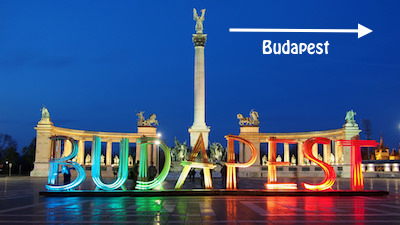Day #13 Visiting Vienna Austria Part #2 (Page Eighteen)
We continue our two day stay in Vienna with more touring this great city. We depart at 6:00 PM for Budapest out last destination on our adventure.
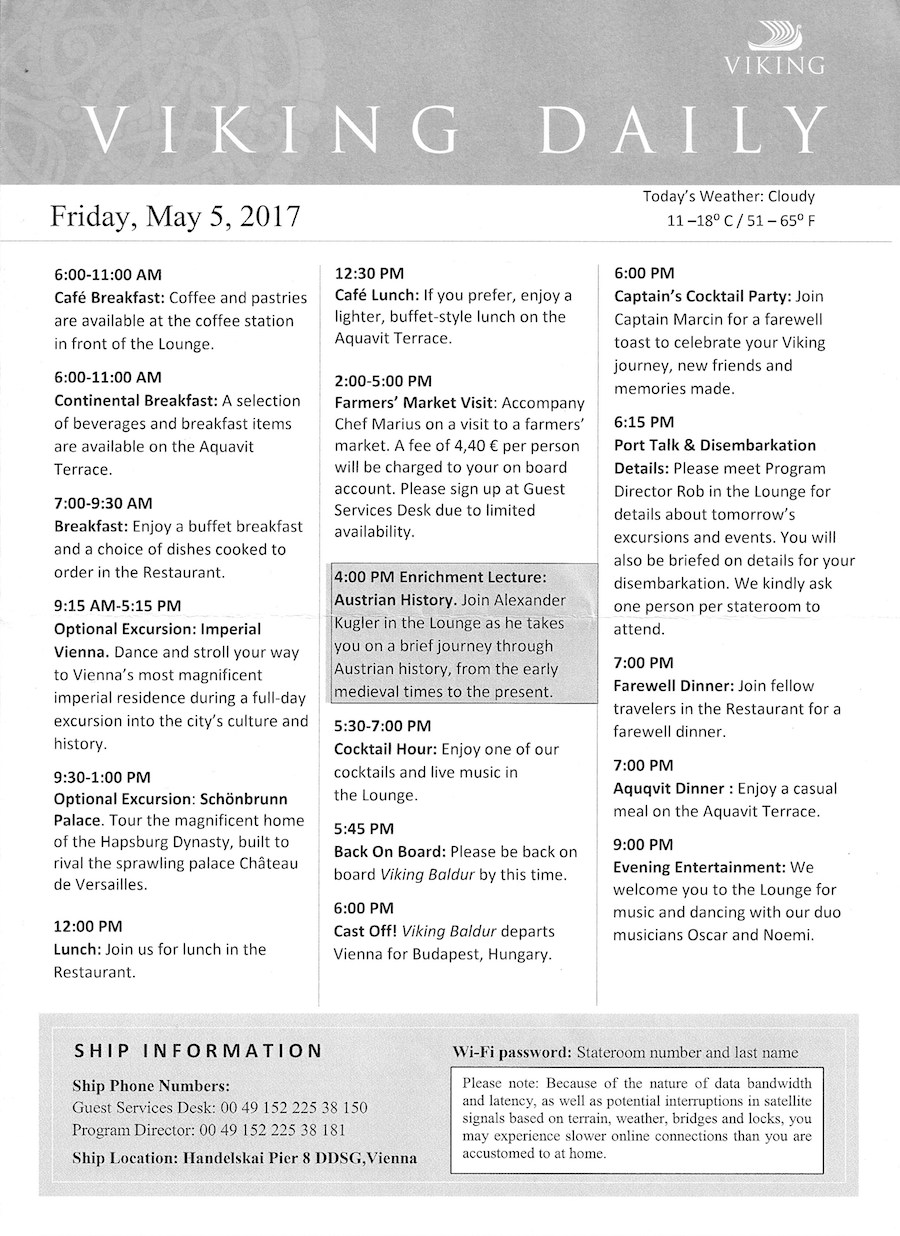
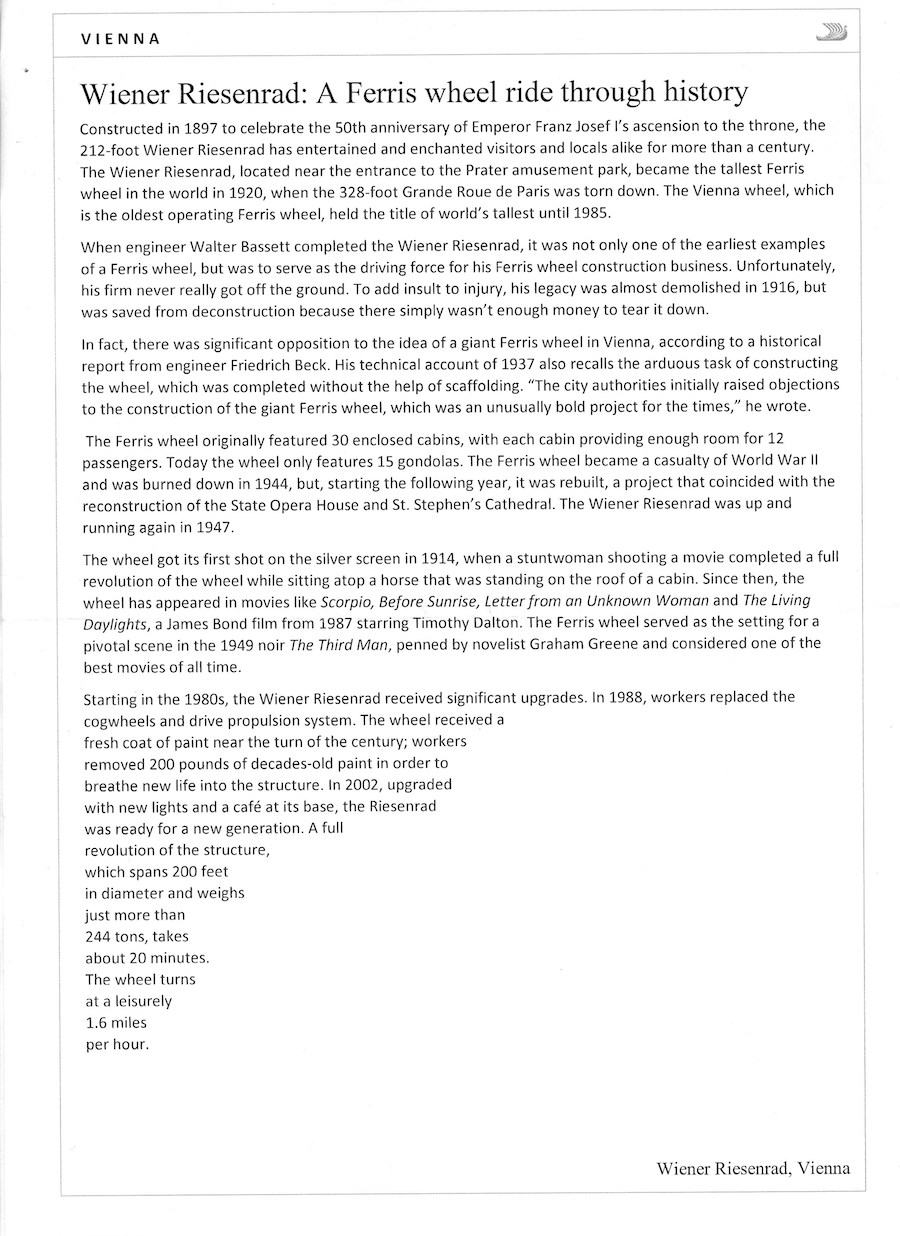
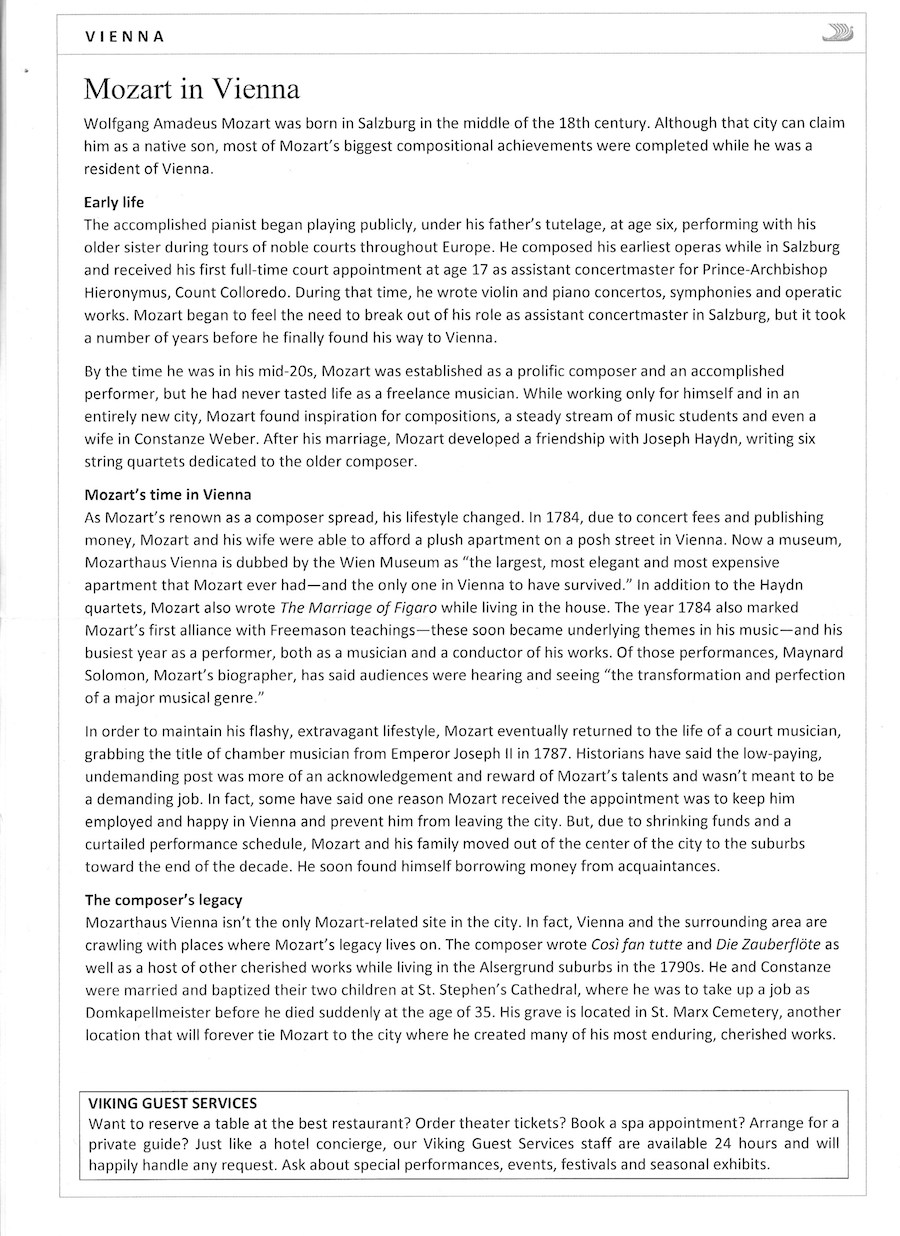
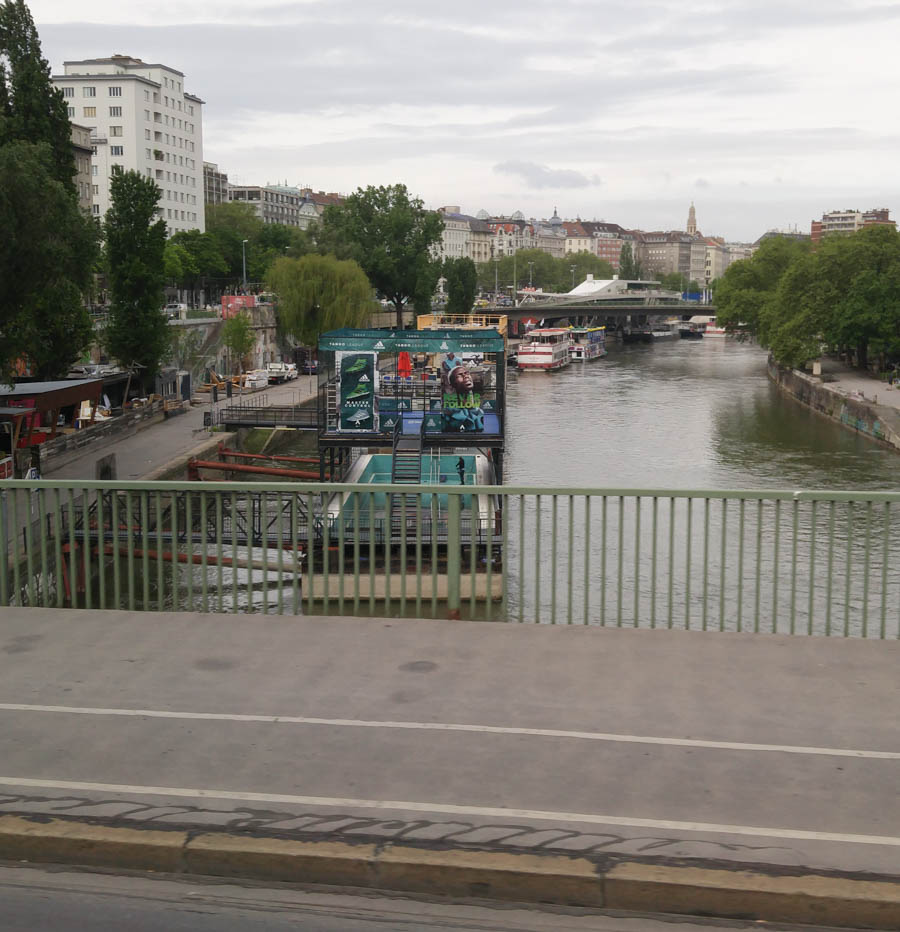
On the bus and seeing town
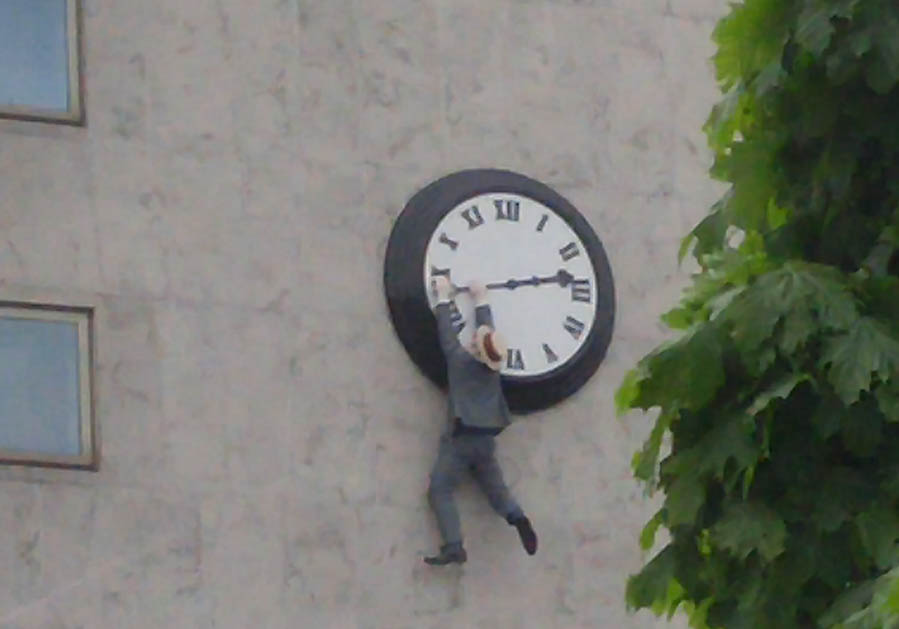
Hanging in there
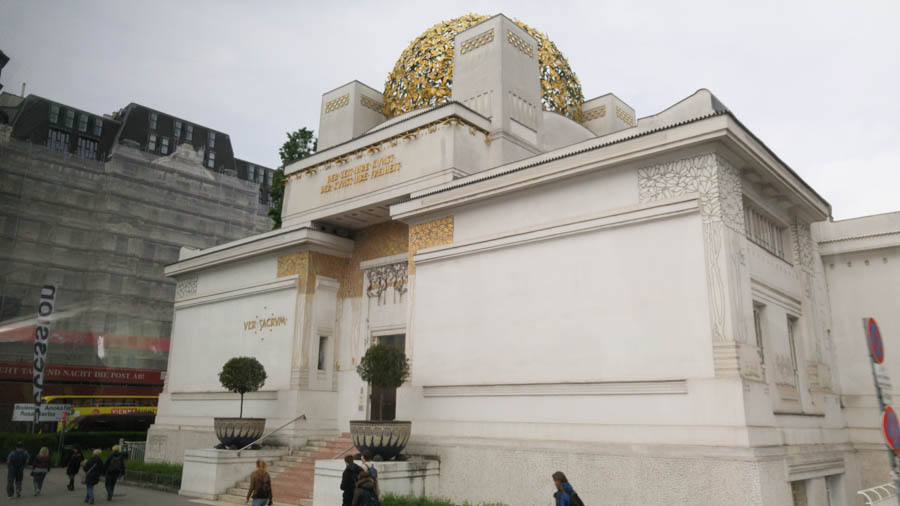
Did You Know? - Not far from the Karlsplatz stands the Wiener Secession building. It is one of the best examples of the jugendstill movement that became very influencial at the end of the 19th century. The building is completely white, with the exception of a golden ball on top of the building. The building is also special as it was completely paid for by several jugendstill artists themselves. The building was built in 1897, and decorated by several artists, including Gustav Klimt. His famous Beethoven Fries is one of the main pieces of the collection.
The Secession Building is an exhibition hall built in 1897 by Joseph Maria Olbrich as an architectural manifesto for the Vienna Secession, located in Vienna, Austria. Secession refers to the seceding of a group of rebel artists from the long-established fine art institution.
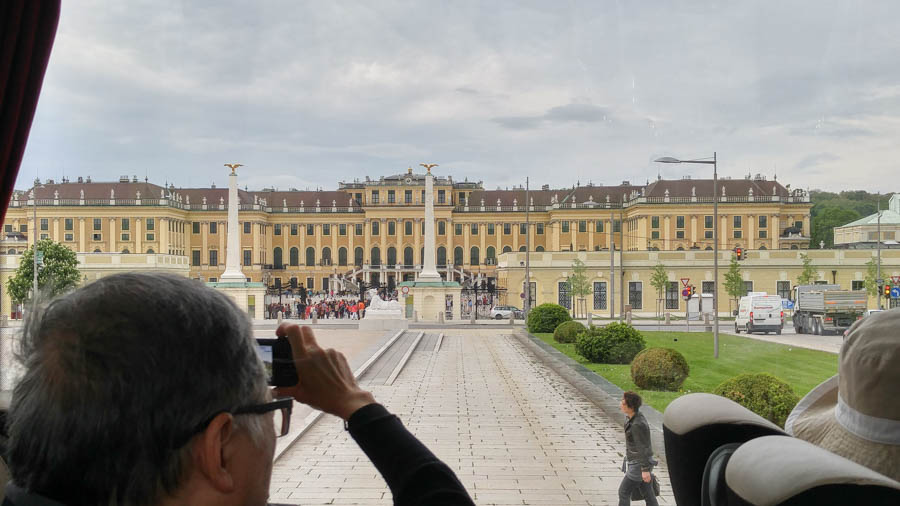
Schönbrunn Palace (Click for fullsized image)
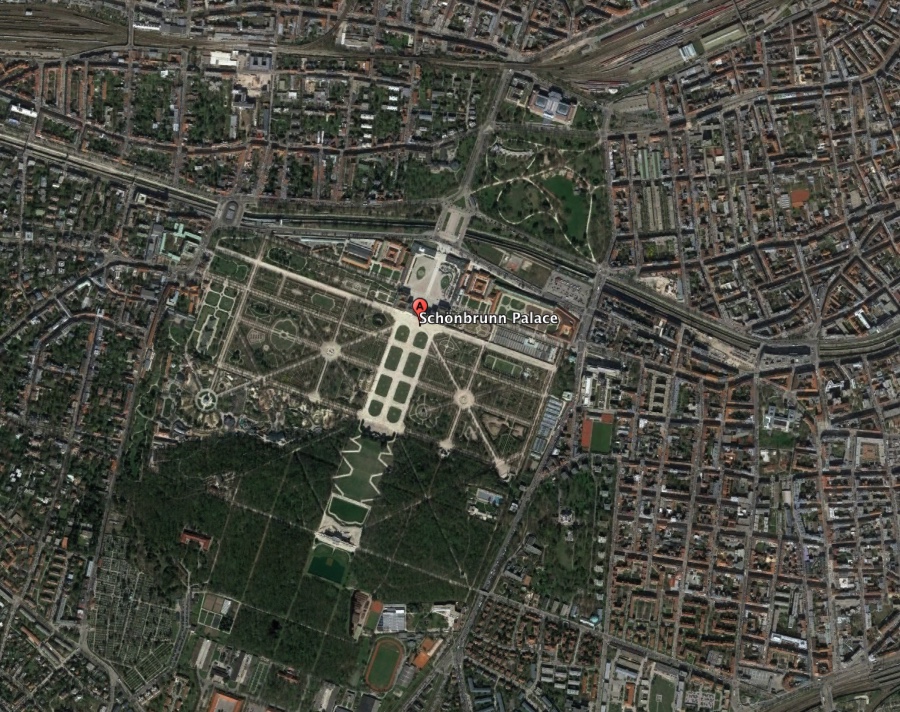
The grounds are huge
Did You Know? - Schönbrunn Palace (German: Schloss Schönbrunn [ʃøːnˈbʁʊn]) is a former imperial summer residence located in Vienna, Austria. The 1,441-room Baroque palace is one of the most important architectural, cultural, and historical monuments in the country. Since the mid-1950s it has been a major tourist attraction. The history of the palace and its vast gardens spans over 300 years, reflecting the changing tastes, interests, and aspirations of successive Habsburg monarchs.
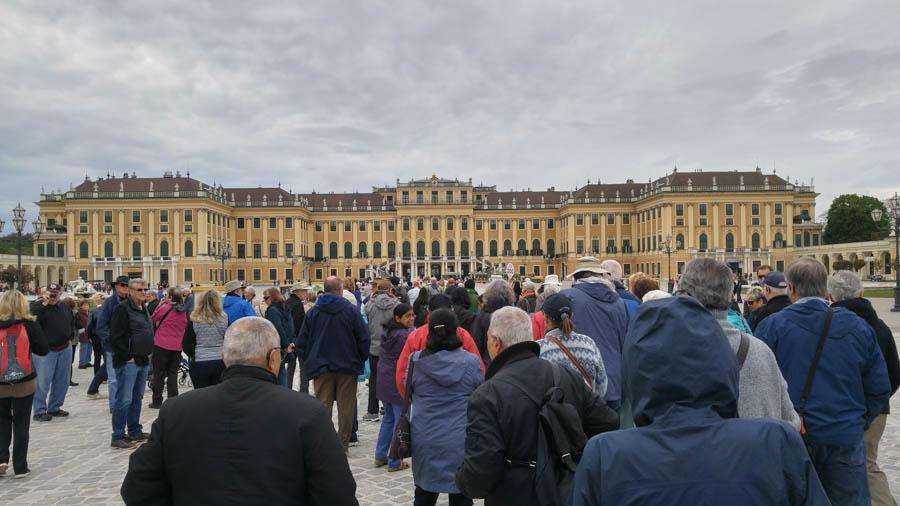
It's a long walk to the palace

The courtyard needed to be large to handle the carriages of 100+ years ago
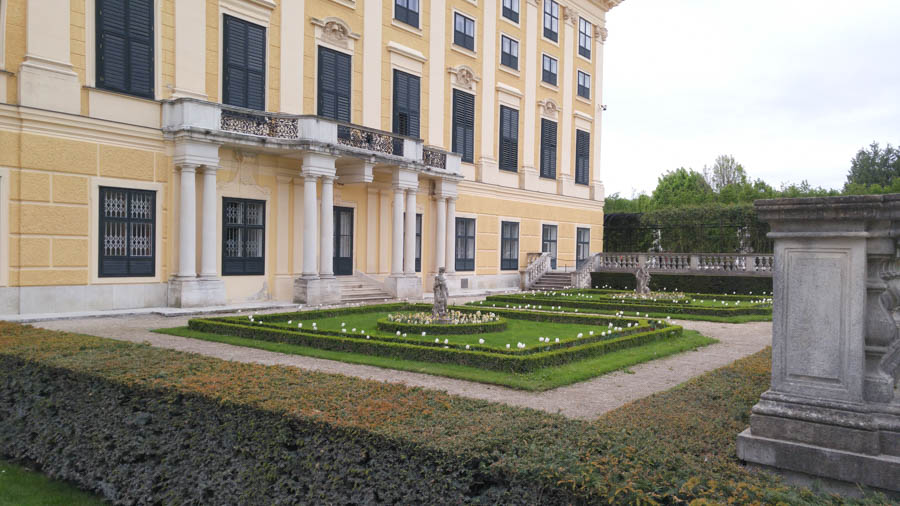
The gardens are amazing

Wisteria goes on forever
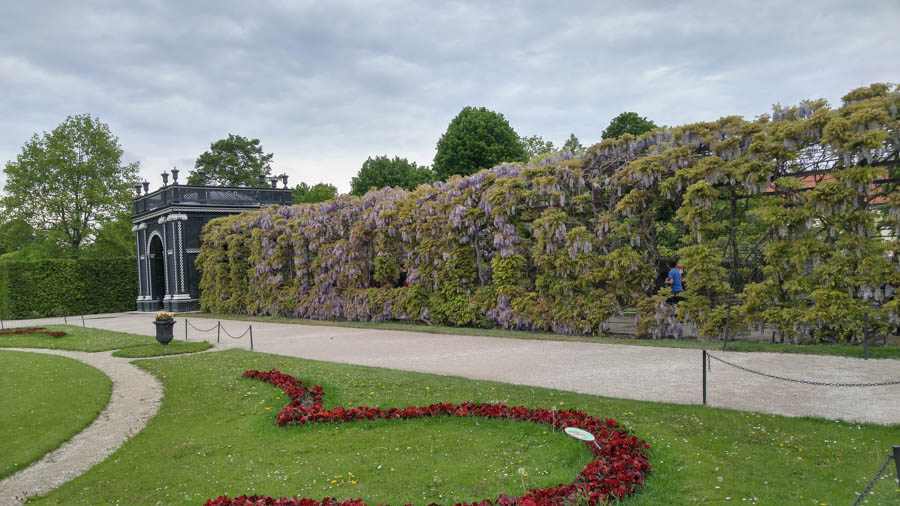
The gardens take almost a day to see properly

Gloriette, the Neptune Fountain, and the Great Parterre
Did You Know? - The garden axis points towards a 60-metre-high (200 ft) hill, which since 1775 has been crowned by the Gloriette structure (Fischer von Erlach had initially planned to erect the main palace on the top of this hill).
Maria Theresa decided the Gloriette should be designed to glorify Habsburg power and the Just War (a war that would be carried out of "necessity" and lead to peace), and thereby ordered the builders to recycle "otherwise useless stone" which was left from the near-demolition of Schloss Neugebäude. The same material was also to be used for the Roman ruin.
The Gloriette was destroyed in the Second World War, but had already been restored by 1947, and was restored again in 1995.
The Gloriette today houses a café and an observation deck which provides panoramic views of the city
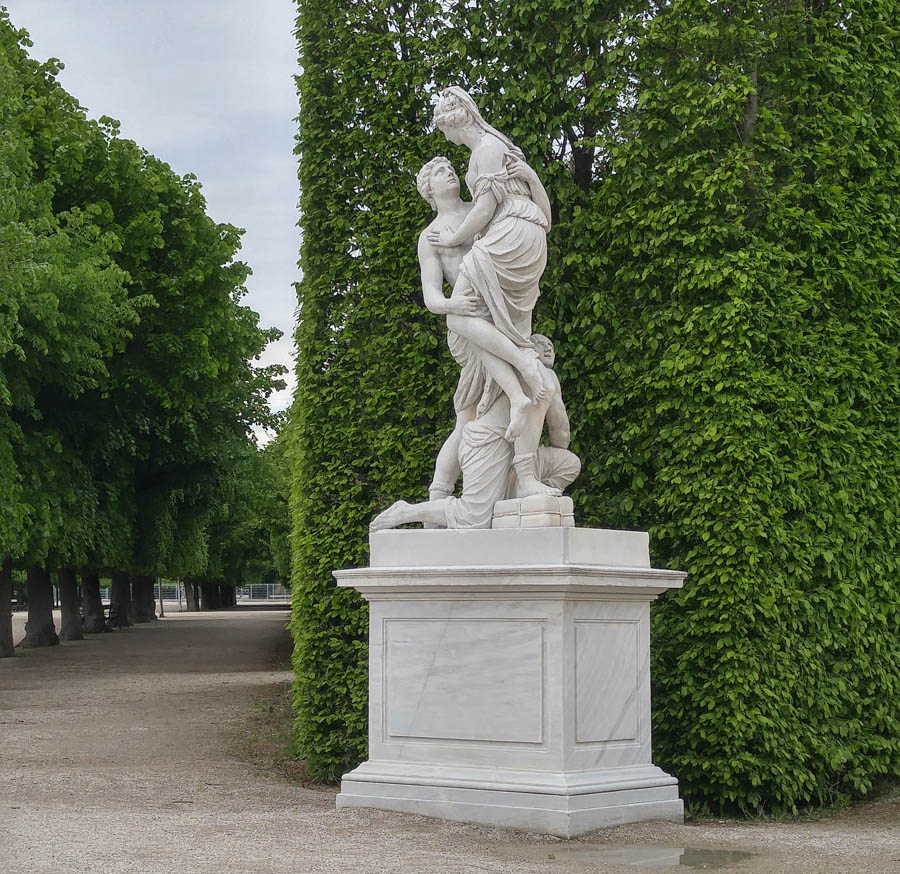
Statues are located throughout the garden
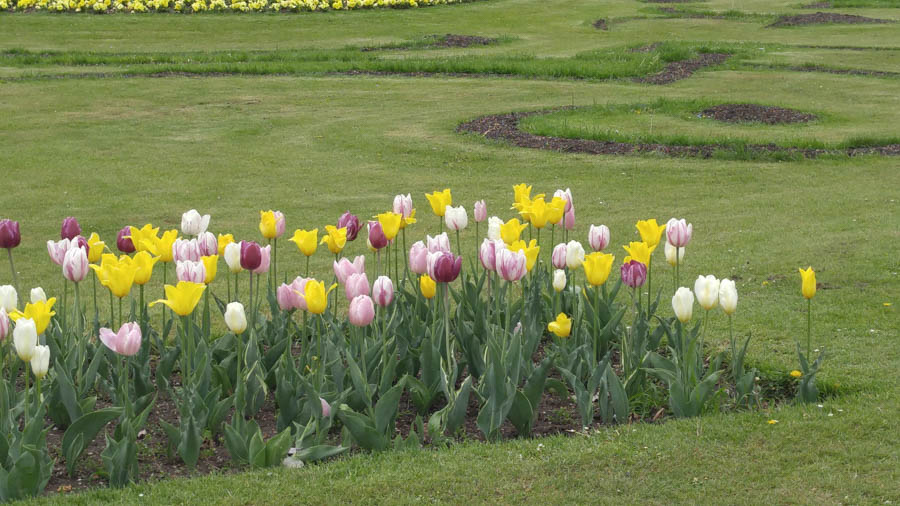
The tulips were magnificent
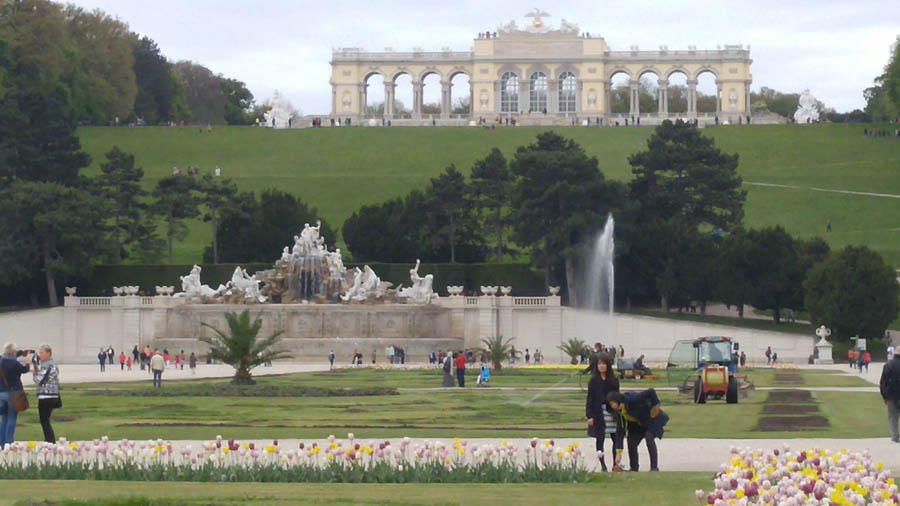
The fountain was breathtaking
Did You Know? - Designed as the crowning element of the Great Parterre, and sited at the foot of the hill behind the palace is the Neptune Fountain, which was conceived as part of the overall design of the gardens and park commissioned by Maria Theresa in the 1770s.
At the centre the wall is interrupted by a projecting, semi-oval plinth from which rises a rocky landscape peopled with the sea-god Neptune and his entourage.
Retaining wall and plinth are articulated by blind panels, those on the plinth being decorated with masks, while the vertical elements separating them are embellished with garlands.
At the center of the figural group above a rocky grotto stands Neptune in a shell-shaped chariot, his trident in his hand. To his left is a nymph, while on his right kneels the sea-goddess Thetis,
entreating Neptune to favor the voyage of her son, Achilles, who has set off to conquer Troy. Frolicking at the foot of the grotto are the Tritons, creatures who are half-man and half-fish, and belong to Neptune’s entourage.
They hold conch shell trumpets with which they can inspire fear in both man and beast, and are restraining the hippocampi or sea-horses who draw Neptune’s chariot across the seas.
Neptune driving across the seas in dominion over the watery element is a common motif in sixteenth- to eighteenth-century art, being used as a symbol for monarchs controlling the destiny of their nations.
The figural group was originally free-standing, but a screen of trees was planted behind it during the nineteenth century in order to provide it with an effective foil.
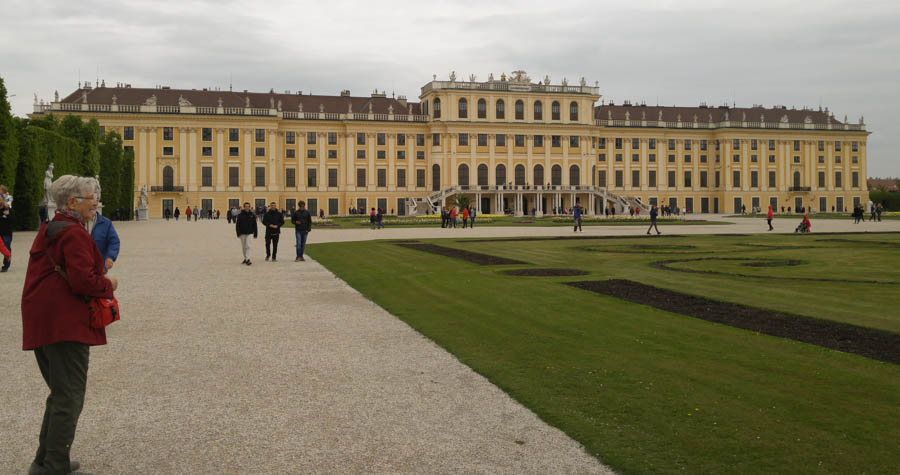
Schönbrunn Palace is a former imperial summer residence located in Vienna, Austria. The 1,441-room Baroque palace is one of the most important architectural, cultural, and historical monuments in the country
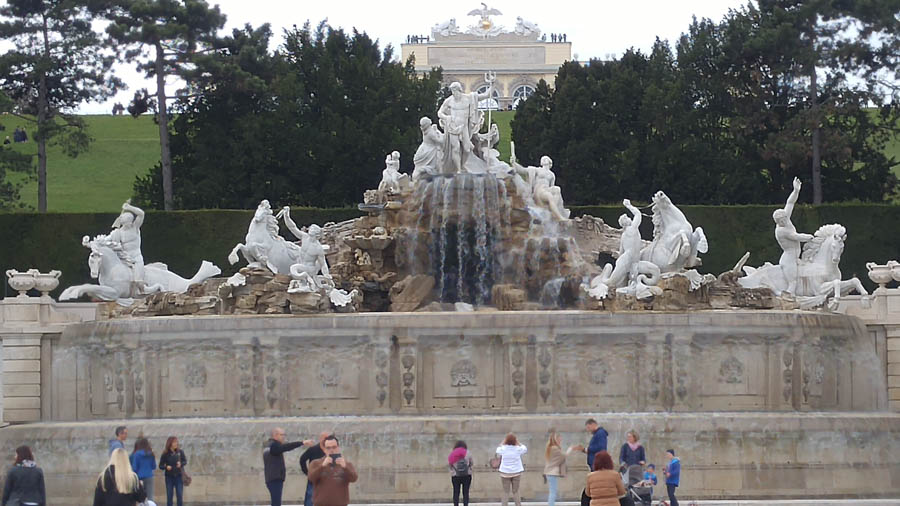
Quite amazing
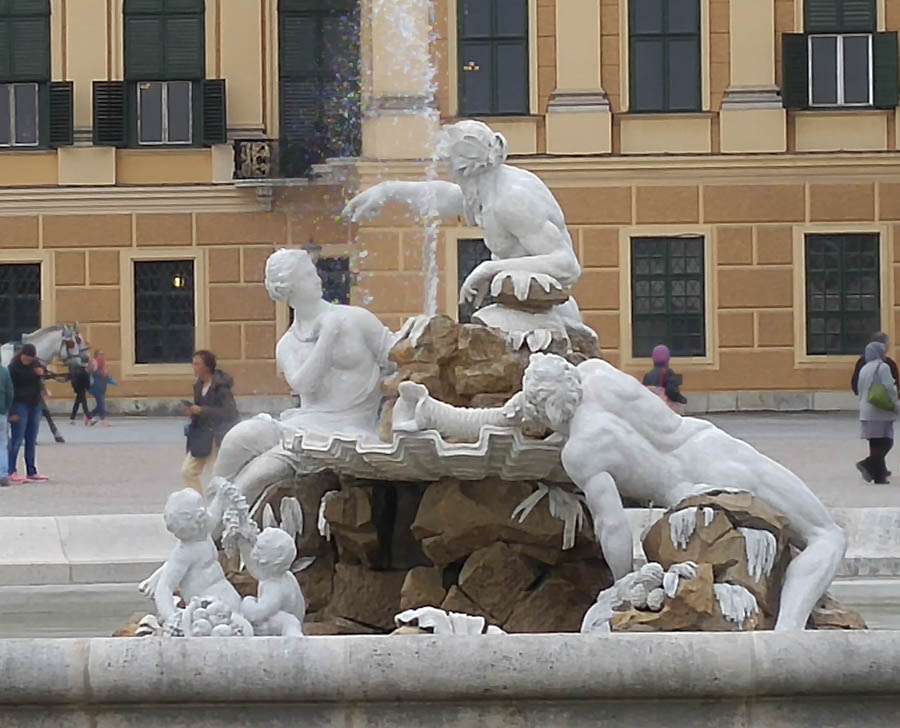
Back to the bus
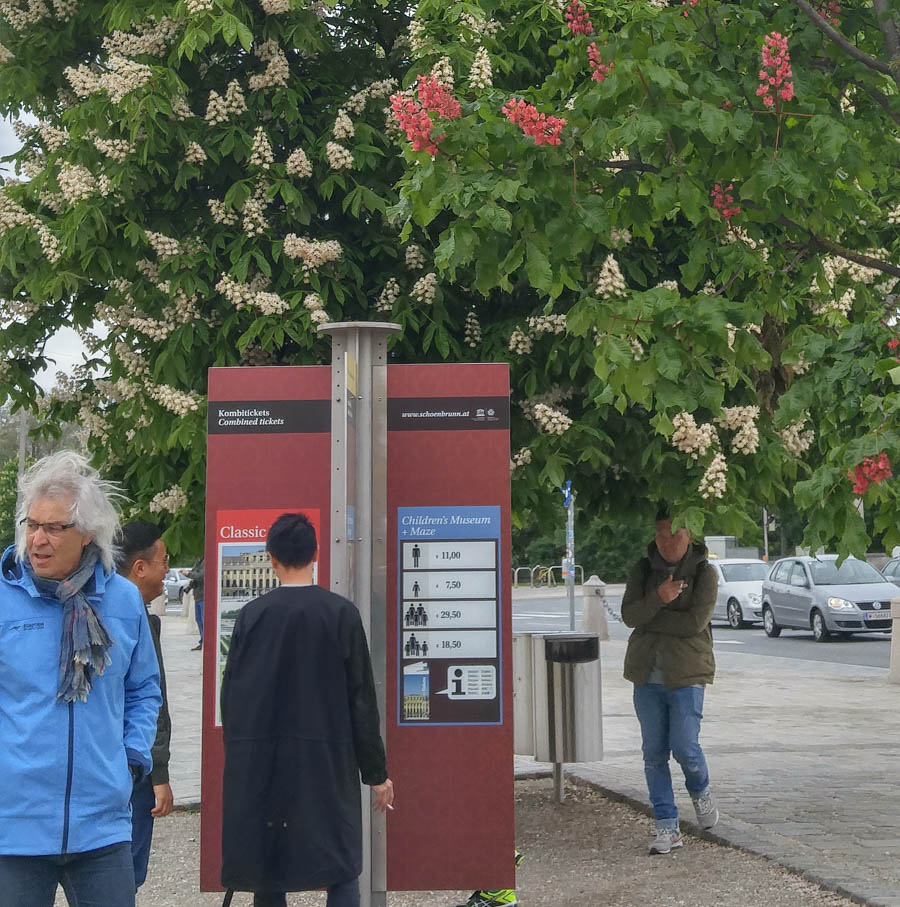
To the Children's Museum
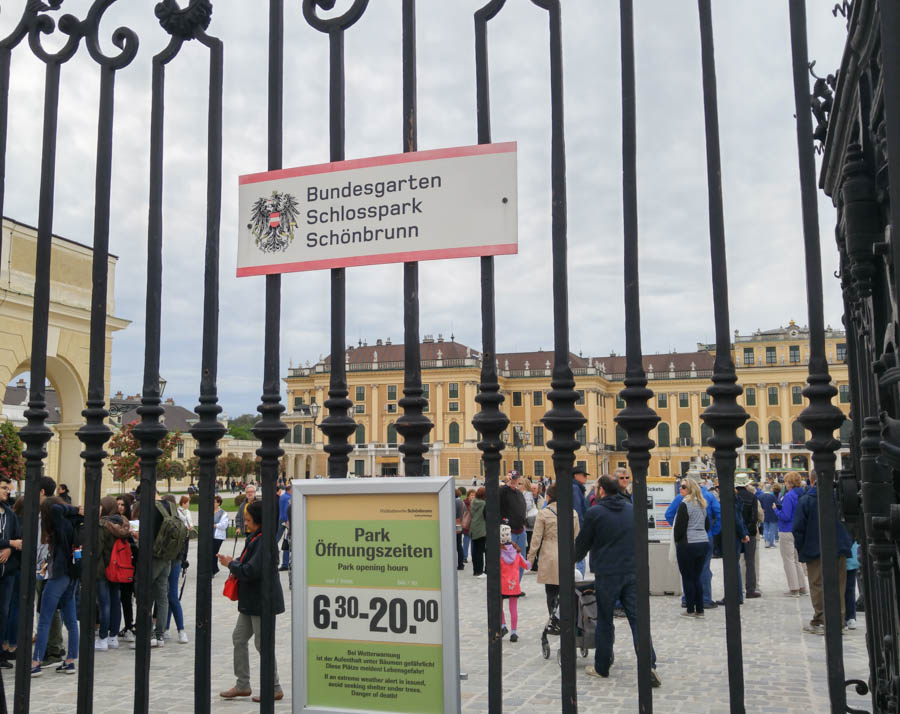
The Children's Museum is next to the palace

Interesting sign about a dinner venue
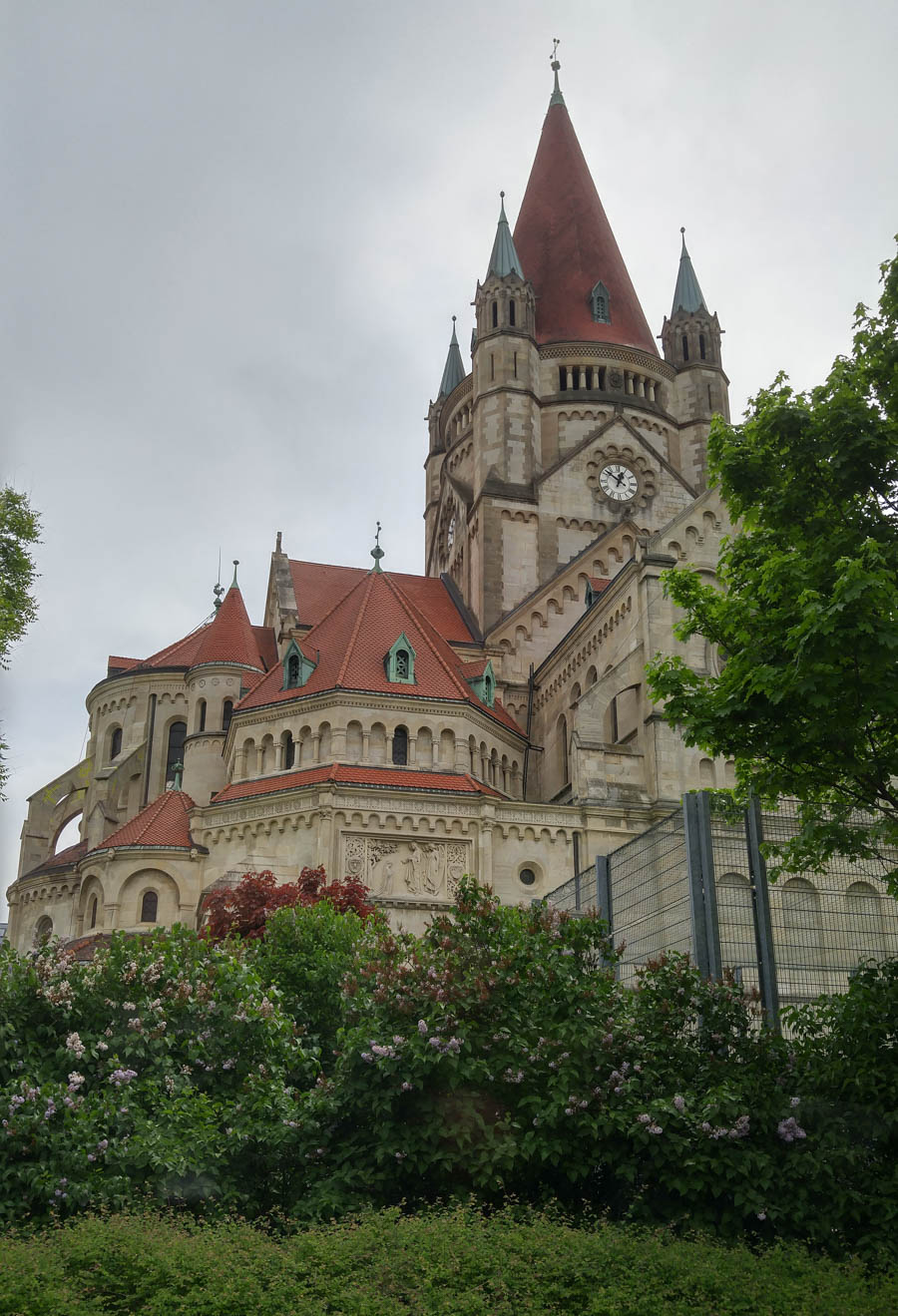
St. Francis of Assisi Church
Did You Know? - St. Francis of Assisi Church, also known as the Kaiser Jubilee Church and the Mexico Church, is a Basilica-style Catholic church in Vienna, Austria. Built between 1898 and 1910, it was consecrated in 1913.
The construction of the church celebrated the 50th anniversary of the reign of Emperor Franz Joseph I of Austria. A competition was held to select the design and was won by architect Victor Luntz. The four-bay, basilica-like brick building was intended as a garrison church; designed in the Rhenish-Romanesque style, its three red-tiled towers are visible several kilometers away.
The church, which is directly situated near the Danube, is now home to the Vienna English Speaking Catholic Community (VESCC) who have held weekly masses at the church since moving there in 2009.
The Mexikoplatz (Mexico Square), formerly known as Erzherzog-Karl-Platz (Archduke-Karl-Square), commemorates the fact that Mexico was the only country outside the Soviet Union to protest against the Anschluss of Austria to Nazi Germany.


Seeing the town from the river
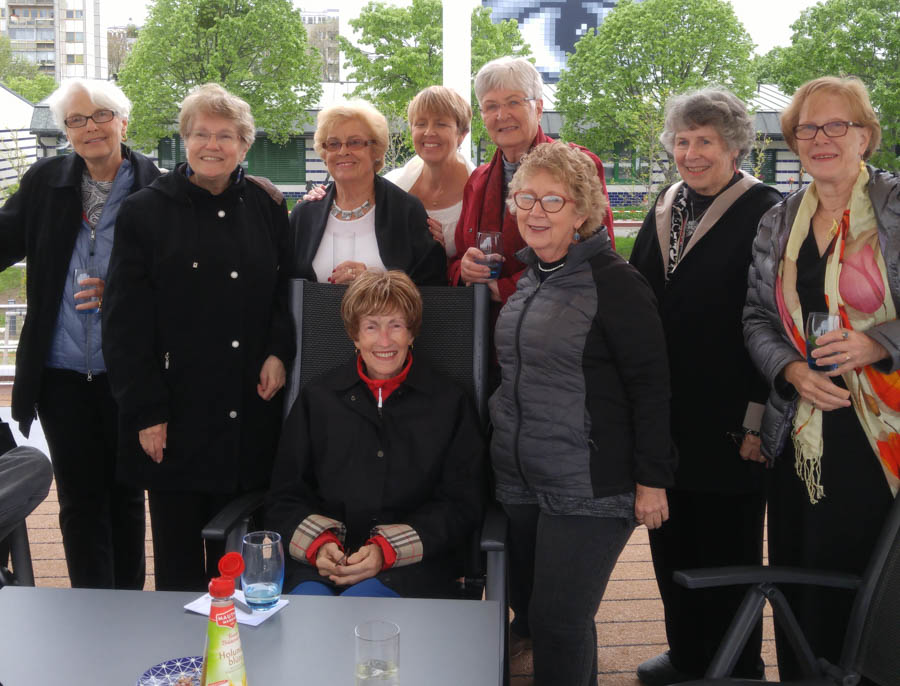
A great group to travel with
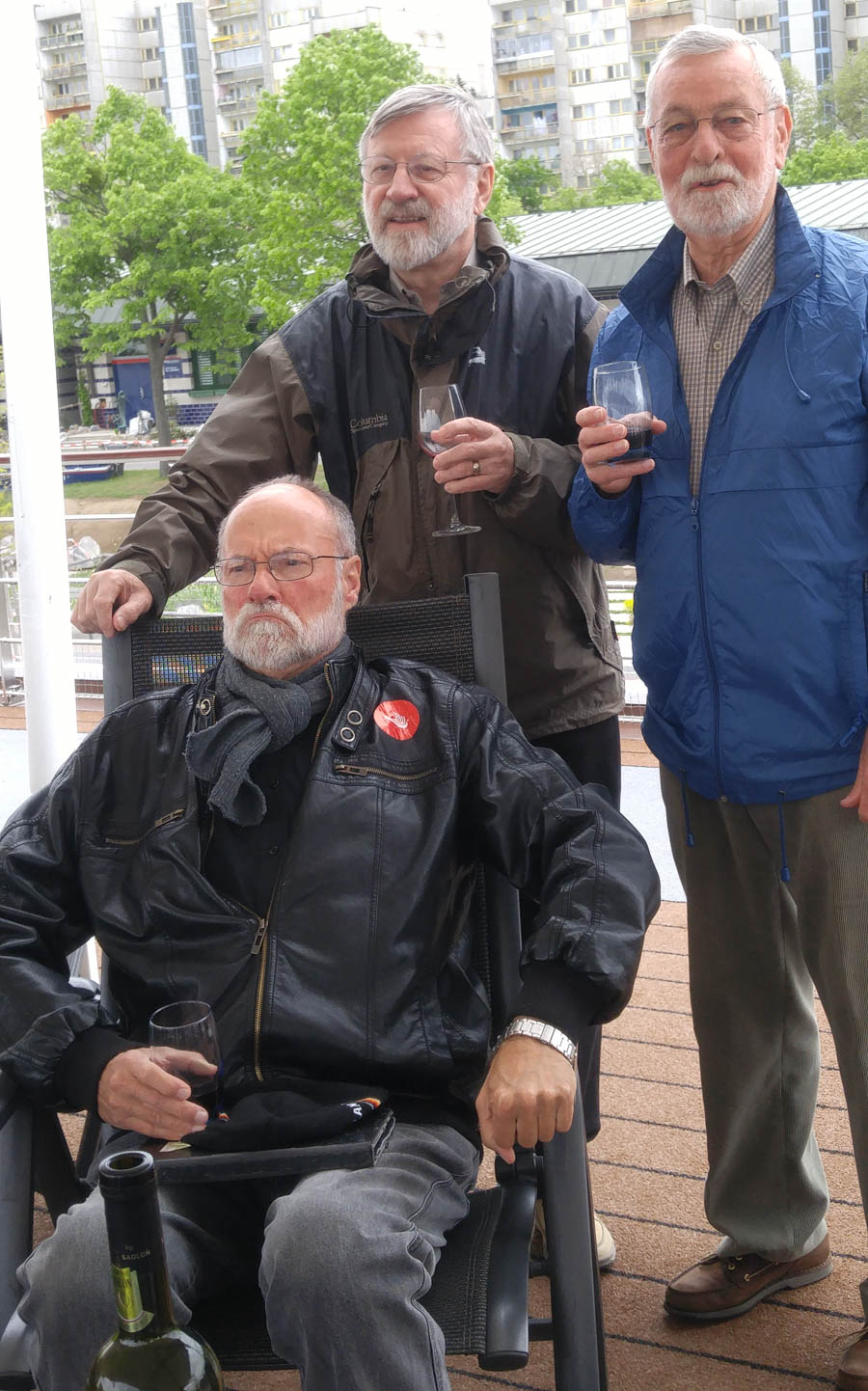
...and wine of course is a requirement

Last of the on-ship desserts!
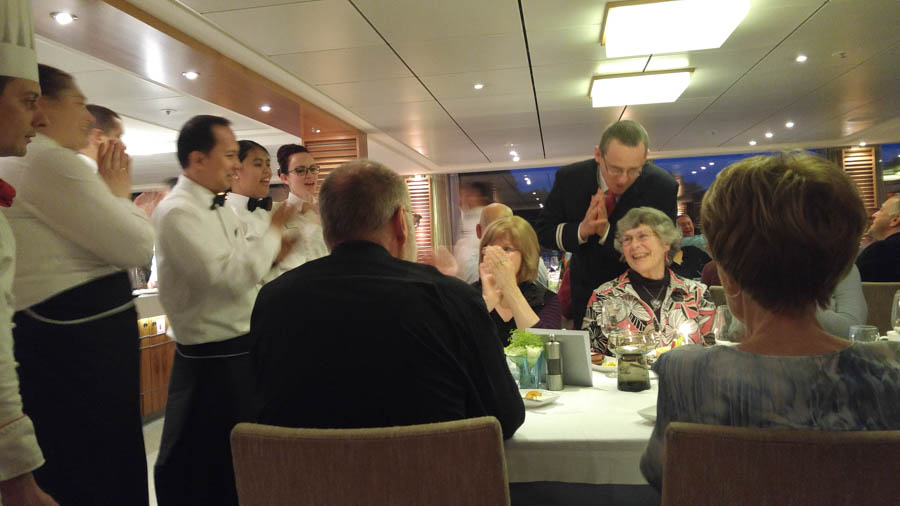
Goodnight staff
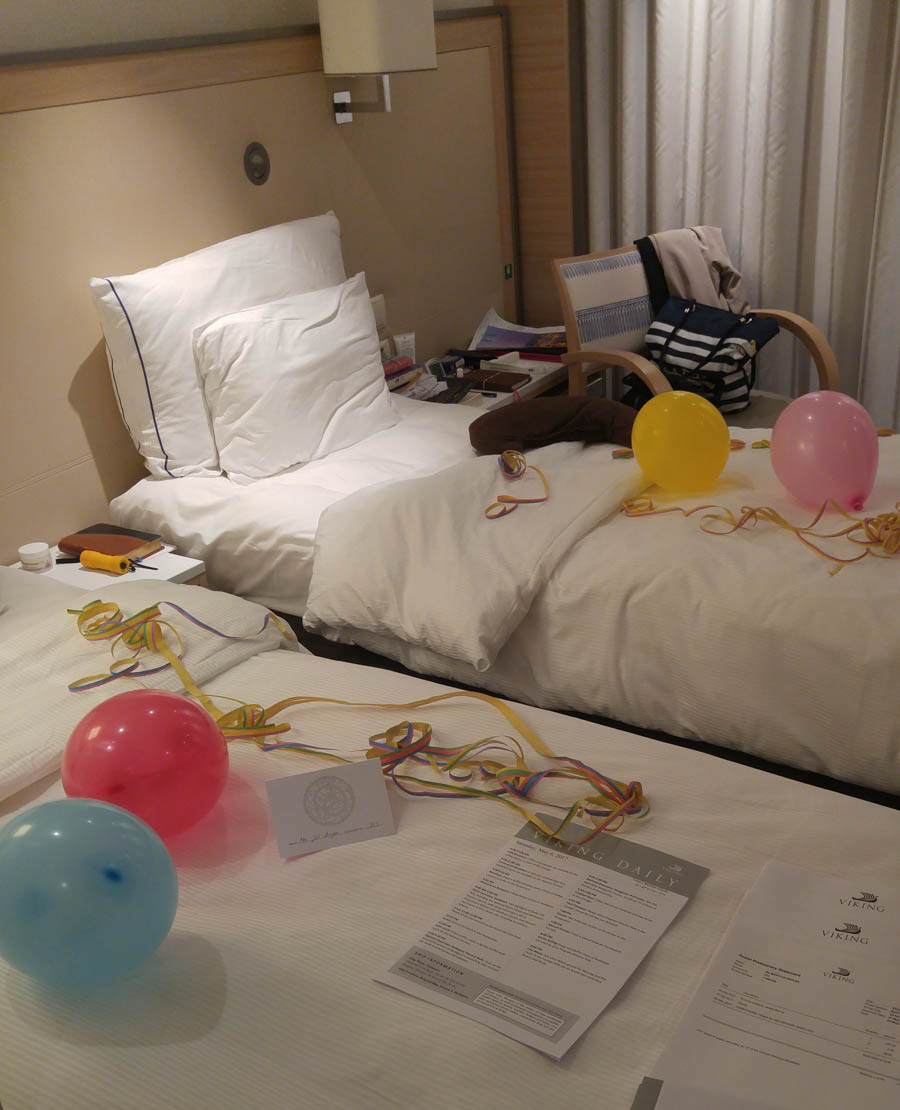
Packing up for departure
